When winter predators don’t cooperate with calling, or if you want to experience a different type of predator hunting, I suggest you make a switch to the spot and stalk style of predator hunting. Predator calling is the new, hot, sport for hunters who want to fill in the winter doldrums with excitement and the satisfaction that you out-smarted a cagey animal.
However, as many seasoned veteran predator hunters know, not all of them will come into a call. There are various reasons for this. It could be that they have been educated by previous hunters, or maybe they are comfortable in their daily routine and know better than to stray from what they know to be safe. I would bet that 9 out of 10 of the predator hunters you see on television will tell you it isn’t as easy as the editors make it look. There are days when predators just don’t come into the call and it is enough to shake the confidence of any hunter. I’ve had stands where I was sitting feet away from prints and scat, knowing that a coyote would come in, only to be left wondering what happened 15 minutes later.
Here in the west, many deer hunters use the spot and stalk method to hunt Mule Deer. It consists of finding a comfortable place to sit and using your binoculars or spotting scope to slowly scan for deer that are feeding, or bedded down. Once you spot the deer, you slowly move into a position for a shot. It can be challenging because of terrain and other obstacles, but quite effective.
Spot and stalk for predators is not as difficult as deer, mainly due to flat terrain, close proximity to roads and occasional man-made obstructions that keep you hidden while you approach your target. Coyotes, in particular, love to spend cold winter days, hunting in open fields, mousing around for tasty treats, such as voles or other rodents. Coyotes have a habit of putting aside all their feelings of territory and shyness of humans when it is bitter cold. They will sit out in large open fields near other coyotes, working hard for their next meal, almost ignoring what is going on around them. How many times have you seen a coyote in a field, ears cocked down, head tilted, ready to pounce on a rodent as it moves beneath the snow or thick grass? Their concentration is not on a bit of movement 300 yards away, it is on that warm hunk of protein underneath their nose. These are the predators that are ripe for the spot and stalk hunter. Other predators, such as fox, will often be found sleeping on snow drifts in the sun, keeping an eye out for impending danger; while bobcat will stay tucked into thick brush on the edges of fields seemingly protected from other predators, so the opportunities can be abundant.
The Spot:
Because much of your time will be spent glassing open fields, looking for objects that just seem out of place, you will need a good vantage point that will not alert the predator. If I cannot scan the area from above, far enough away to see the entire field and spot obvious targets (see pictures #1 & #2 below); my next option is to park my vehicle out of view and walk into the area, using brush (whenever possible) to conceal my movements. Once I am at a spot where I can see every nook and cranny of the field, I take my time to look for any predators that are obvious. Those are typically the ones enthralled in hunting up the vole moving around under its nose. Once I’ve marked those, the real glassing begins. I start scanning for ears, or heads that are popping out of the grass or snow. If there are fences, I take my time picking apart anything in front of, or behind the posts. The reason is simple, if the distance to the predator I want to shoot is too far, I will work my way along the fence line to get within range. I don’t want to spook a hidden coyote or fox, only to have it run off and spook everything in the field. Once I have located all the predators in the field, I plan my approach. This is important, because the chance to shoot more than one predator is high, simply due to a higher concentration of animals and not knowing where the shot is coming from (if you make the proper approach).
Here are some examples of the types of fields I hunt. Although they are not covered in snow right now, within a month there will be a foot or two of snow and it will be loaded with predators looking for a midday meal. The images can be deceiving, these fields are anywhere from 500 to 1000 yards across. This gives the shooter a challenge in setting up properly for the shot.
The Stalk:
Because most of the animals you spot will be probably be a good distance, the stalk is very important to increase your odds of being successful. Nothing says “get the heck out of here”, like a human screeching his vehicle to a halt, piling out, slamming bolts shut and running to get into range. Your approach needs to be deliberate and well thought out, keeping wind direction in mind at all times. I tend to take the non-direct approach whenever possible. If I can make up ground by walking in an angle that brings me closer to the animal, but not straight at it, I will take that route any time. Staying on the edge of the field, using vegetation, or other barriers while moving into position, is the best plan of action (see photo #2 below). If you have to enter the field to close the distance for a shot, keep your binoculars and rangefinder (more on those below) handy so you can make adjustments based on what your target animal is doing. Try to keep something between you and the animal whenever possible. This helps break-up your silhouette and allows you to check on your progress without being spotted. Fences, drainages or small creek beds are excellent to use as you make your stalk (see photo #1 below). As you move to get into range, be aware of what the animal is doing. If the predator is staring at you, stop and hold still. Continue when you feel that the attention is not on you. Once you close the gap, range the animal and find a place that is comfortable for a shot.
These are two of the actual fields I hunt, where I have killed coyotes out in the open (after a stalk to get into position). I’ve noted barriers to help your stalk in photo #1 and the best shooting position in #2 (Images taken from Google Earth).
The Shot:
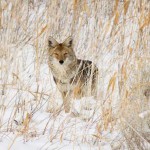 Depending on the size of the field, your shots should fall within the 200 to 300 yard range. Know your rifle and the ballistics of your ammunition. Bullet drop and wind-drift is very important at these distances. Once you are set-up for the shot and have ranged the animal, stop. If you have not been detected, now is the time to find other potential targets for your follow-up shots. At this point, I try to find the ones that were lounging, as their position and not knowing where I am, will make it almost impossible to figure out where the shot came from. At this point, take aim on the first target. Take your time and at this moment, don’t think about the second or third shot opportunities. I am guilty of rushing a “gimme” shot and missing, because I was worried about what I would shoot next! At the shot, confirm that your animal is DOWN! For example, if it is a coyote and it does the spin, make sure it drops and doesn’t run off. If your animal is down, shift to make the second shot. Animals have a hard time hearing where the shot came from, especially in snow, so you should have enough time to dial in on the next one.
Depending on the size of the field, your shots should fall within the 200 to 300 yard range. Know your rifle and the ballistics of your ammunition. Bullet drop and wind-drift is very important at these distances. Once you are set-up for the shot and have ranged the animal, stop. If you have not been detected, now is the time to find other potential targets for your follow-up shots. At this point, I try to find the ones that were lounging, as their position and not knowing where I am, will make it almost impossible to figure out where the shot came from. At this point, take aim on the first target. Take your time and at this moment, don’t think about the second or third shot opportunities. I am guilty of rushing a “gimme” shot and missing, because I was worried about what I would shoot next! At the shot, confirm that your animal is DOWN! For example, if it is a coyote and it does the spin, make sure it drops and doesn’t run off. If your animal is down, shift to make the second shot. Animals have a hard time hearing where the shot came from, especially in snow, so you should have enough time to dial in on the next one.
Equipment:
The great thing about spot and stalk predator hunting, is that you probably have everything you need to get started. I have a short list, but keep in mind, these are only my preferences and items I feel are needed when shooting in the snow.
- Rifle – Small caliber, if possible. You will want to save those prime, winter furs! Make sure you know where your rifle is shooting with a ballistics table taped to the stock, or seared into your memory. Don’t forget your ammo!
- Rangefinder – It is very hard to judge distance on predators without a rangefinder, especially when they are 200+ yards out. Pick-up a rangefinder and your success ratio will increase!
- Binoculars – You will need them to find any predators that are lounging in the grass or snow. Essential to find them and also to make an uninterrupted stalk!
- Shooting sticks – If you are shooting in snow or grass, it can sometimes be deep. Purchase or make a set of shooting sticks that will work in deep snow or grass situations.
- White Snowsuit or Camo/Clothing to match your surroundings – You don’t need to spend a lot of money on a winter suit. White Tyvek cover-all suits are less than $10.00 each and are easy to pack in your vehicle.
- Snowshoes – If you hunt deep snow, get a pair. It will make life so much easier to get around. If you don’t, and enjoy trudging until you are sweating and breathing so hard you can’t keep your crosshairs steady, then that’s fine as well.
- Some type of drag – If you shoot a predator a couple of hundred yards from your spot, you will not want to carry it all the way back. Let the snow work to your advantage and use a drag. Take care not to damage the fur while doing so.
When you are hunting open fields with no snow, a rifle, rangefinder, binoculars, shooting sticks, a drag and some type of camo or clothing that will blend into the surroundings, should be all you need.
While winter predator hunting is very rewarding, it can also fill your wallet or your gas tank if you are carrying the proper licenses to sell the furs to a fur buyer. Prime Coyote fur at some sales in 2013 went for as much as $64.00 average, with heavier Western coyotes going for close to $94.00! Gray and Red Fox ranged from $45.00 (Gray Fox) to $65.00 (Red Fox). Lastly, Bobcat sold at all time high averages close to $600.00, with some going for close to $900.00 per fur!
If you cannot, or do not want to sell, you can always send your furs off to a tannery and have them made into nice pieces for your home, or gifts for others. Also, don’t forget to keep the skull as well. A bright white skull adorning your reloading bench is a great way to spark conversations with other hunters or non-hunters on the benefits and thrill of predator hunting! I’ve even had some of my skulls coated in bronze or copper metals. They look really good and sit on my bookshelf in a coveted spot next to books by Howard Hill, Bert Popowski and Wilf E. Pyle.
The techniques I’ve written about are no way set in stone. Please use them as guidelines to get started. Always be flexible enough to adapt to the situations that arise when hunting predators. This includes the winter spot and stalk predator hunting style.
— By: Eric A. Mayer
Editor’s Note:
A great DVD that includes some of the stalk and spot type of hunting (along with calling) is “Winter Magic” by Pat Cameron and John Summerfield out of Canada. It is available from Stoney Wolf Productions (click image below for their page):
- Podcast with Soul Seekers Nation From the 2025 SHOT Show - February 17, 2025
- Complete Overview of the .17-5.56 KAK Cartridge by KAK Industry - July 21, 2024
- AGM Global Announces New and Upgraded Optics at the 2024 SHOT Show - February 1, 2024

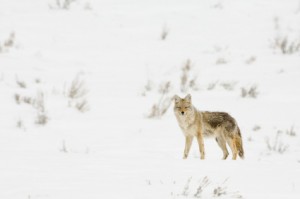
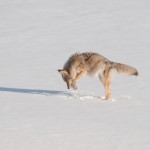
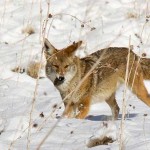
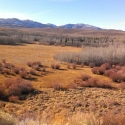
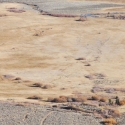
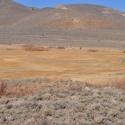
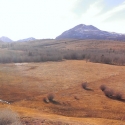
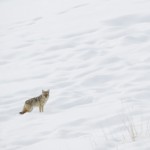
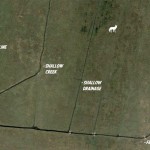
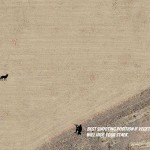
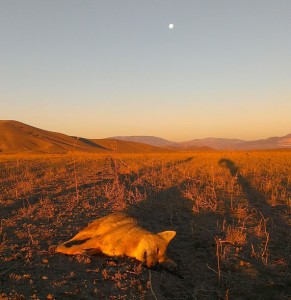
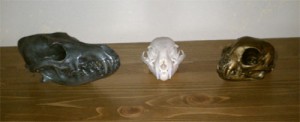
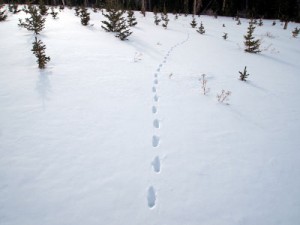
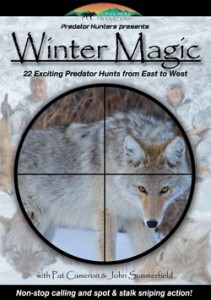
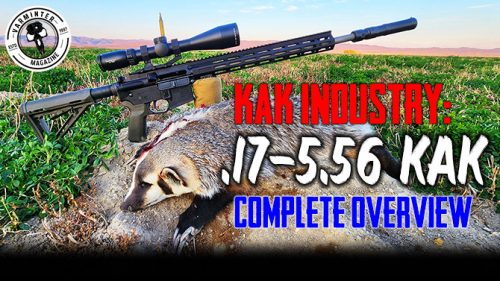
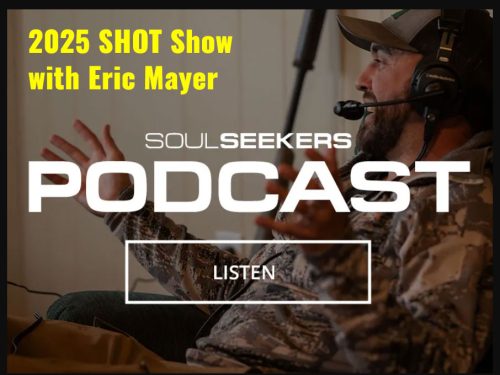
[…] Spot and stalk hunting is an exciting and challenging technique that demands stealth and sharp senses from the hunter. The method involves spotting coyotes from a distance, often with the aid of binoculars or a spotting scope, and then carefully closing the gap to get within shooting range. This technique is particularly effective in open terrains, grasslands, and sparse vegetation, where visibility is high. […]